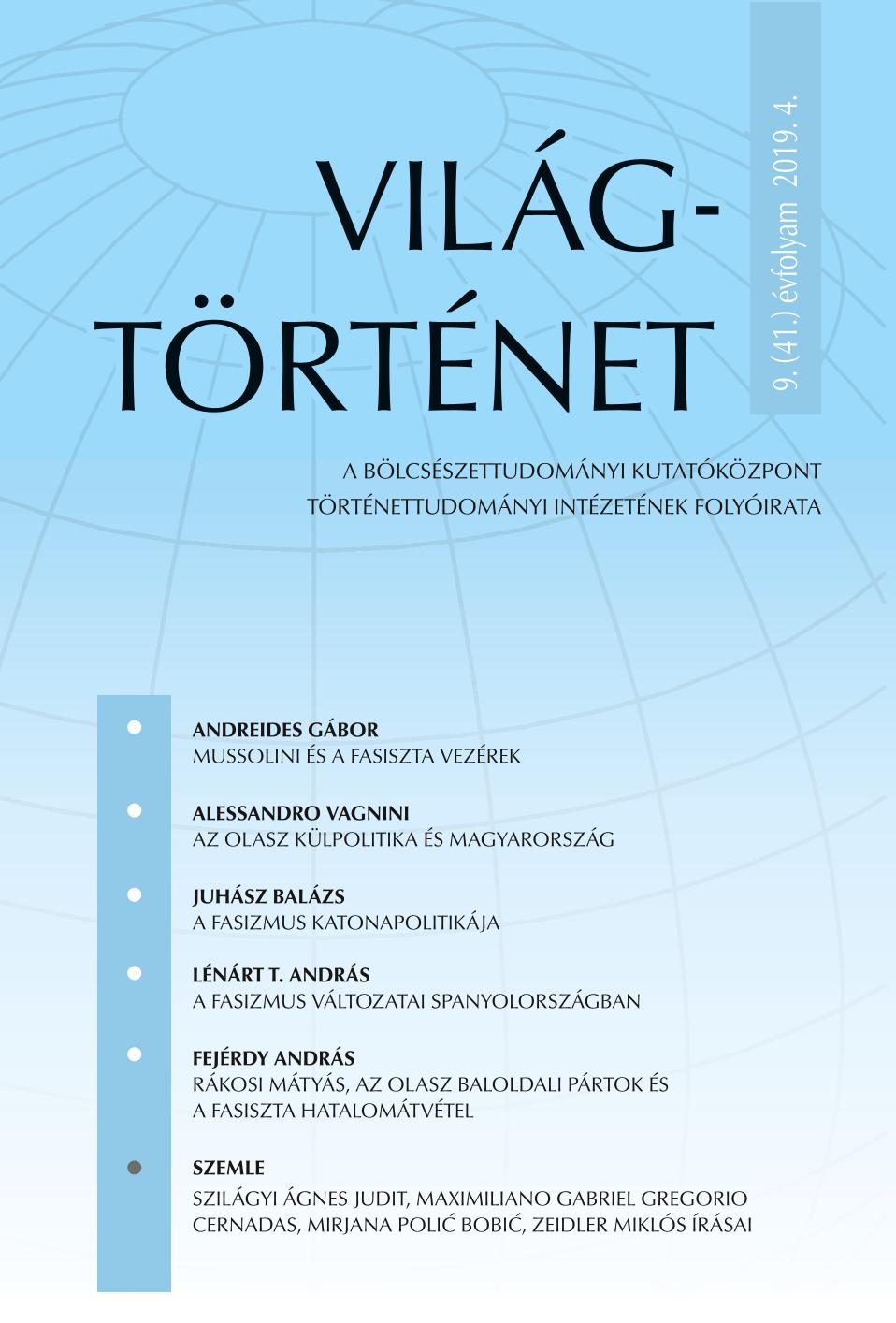Konvergáló új nacionalizmusok? A magyar és az olasz nacionalizmusról
Converging New Nationalisms? On Hungarian and Italian Nationalism
Author(s): Gábor EgrySubject(s): Interwar Period (1920 - 1939)
Published by: Magyar Tudományos Akadémia Bölcsészettudományi Kutatóközpont Történettudományi Intézet
Summary/Abstract: For a long time since 1945, the Horthy-era was defined as fascism, a notion that lost all its credibility with the change of regime in 1989. As a reaction to Communist politics of history, its association with radical right was almost impossible, even though the new wave of fascist studies around the millennium could have provided new impetus for the study of the ideological landscape of interwar Hungary. The growing number of works dedicated to the radical right of this period remained cautious with labelling those lines of thoughts within Hungarian politics. My article argues based on this recent literature and the turn in fascist studies inspired by Roger Griffin, that the new nationalism of the post-WWI period was rather generic Fascism in the form of the „fajvédő” ideas, present in Hungary from very early, since 1919. Thus, it developed parallel with Italian new nationalism, even predated Mussolini’s takeover, it was no imitation as the discredited literature claimed. Furthermore, from the thirties its important tenets regarding a new, harmonious, hierarchical and markedly corporatist society based on the preservation of the dominance of the traditional middle-class, became mainstream, even appearing in government programs too.
Journal: Világtörténet
- Issue Year: 2019
- Issue No: 4
- Page Range: 627-638
- Page Count: 12
- Language: Hungarian

